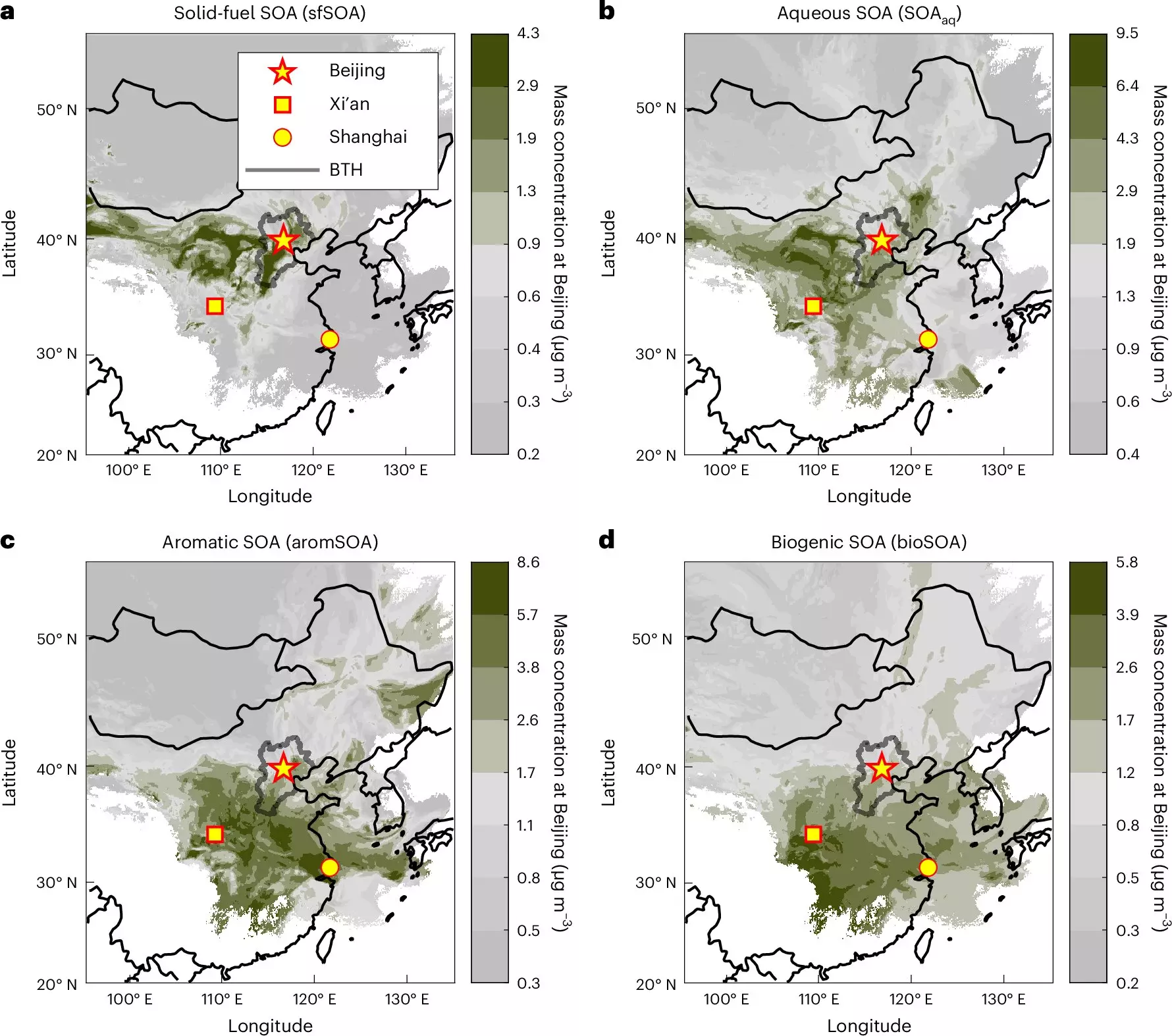Air pollution remains one of the most pressing global health challenges today, claiming millions of lives annually. In cities like Beijing, the dense smog poses a tangible threat not only to the local population but also to environmental stability across broader regions. To effectively combat this pervasive issue, an understanding of the specific sources of air pollution is critical. However, accurately identifying these sources has long been a significant challenge for environmental scientists, given the complexity and variability of atmospheric conditions and chemical reactions.
A groundbreaking study led by researchers from the Paul Scherrer Institute (PSI) in Switzerland, alongside major collaborators such as Beijing University of Chemical Technology and the University of Helsinki, has employed cutting-edge methodology to uncover the origins of aerosols plaguing Beijing. At the forefront of this research is Kaspar Dällenbach, an environmental scientist whose team utilized an innovative mobile aerosol mass spectrometer, allowing them to analyze the molecular composition of smog in exceptional detail.
By tracing the sources of pollution through their summer and winter variations, the researchers have uncovered essential information regarding the dynamics of air quality in the region. As Dällenbach notes, this technological advancement provides a clearer lens into the multifaceted nature of smog and its components.
The study revealed an enlightening contrast in air pollution sources based on seasonal changes. In Beijing, winter months are characterized by the emission of secondary organic aerosols chiefly resulting from the combustion of coal and wood. The geographical scope of these sources extends significantly beyond the city, underpinning a broader pollution network across the Beijing-Tianjin-Hebei region.
In stark contrast, the summer presents a different pollution narrative; the major contributors shift predominantly to urban emissions from transportation and industrial activities. Notably, pollution during this season arises chiefly from air masses flowing northward from regions such as Xi’an and Shanghai. This seasonal disparity in pollution sources is crucial for policymakers to consider when designing adequate air quality control measures.
While advances in technology have significantly enhanced the capability to analyze air quality, pinpointing the exact sources of pollution remains fraught with challenges. The atmospheric journey of pollutants transforms their molecular composition, which adds a layer of complexity to the identification process. Moreover, secondary aerosols, which are crucial in contributing to smog, form intricate chemical patterns as they traverse through the atmosphere.
By leveraging real-time analysis of the molecular composition of aerosols, the research team delineated the distinction between primary and secondary aerosols effectively. Primary aerosols are direct emissions into the atmosphere, while secondary aerosols are products of atmospheric chemical reactions. Understanding the interplay between these two categories is essential for grasping the full scope of pollution reaching urban populations.
Harboring a holistic approach, Dällenbach underscores the importance of recognizing that smog is not merely a localized problem affecting the residents of Beijing, but rather a large-scale regional phenomenon. The transport of aerosols over hundreds of kilometers necessitates coordinated pollution control measures across the entire metropolitan area and its neighboring regions.
To effectively tackle the air quality crisis, strategies must extend beyond city boundaries, integrating various stakeholders and jurisdictions into a unified response plan. The implications of this research highlight the importance of interdisciplinary collaboration, considering urban planners, environmental scientists, and government bodies must unite to orchestrate comprehensive air quality improvement strategies.
Interestingly, the methods pioneered in this study are not confined to Beijing alone. The research team plans to deploy their innovative approaches to explore smog issues in Europe and in urban areas within the Global South that remain underrepresented in air quality studies. This international perspective is vital for formulating a global response to air pollution, as cities worldwide grapple with similar challenges.
The research conducted by the PSI and its collaborators opens a new chapter in understanding how air pollution manifests in complex urban environments like Beijing. With the application of new technology and a commitment to collaborative solutions, there is hope for improving air quality not only in China but across the globe. As this research continues to evolve, it becomes increasingly paramount that both developed and developing regions prioritize air quality as a fundamental aspect of public health and environmental policy.


Leave a Reply